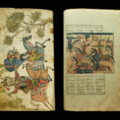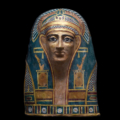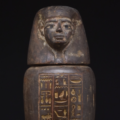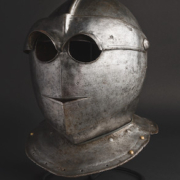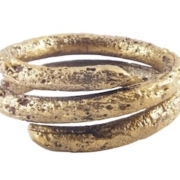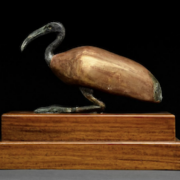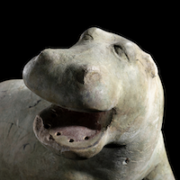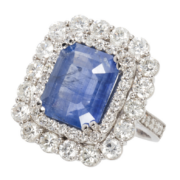Apollo Art Auctions offers prized selection of antiquities, Islamic art & militaria, June 10-11
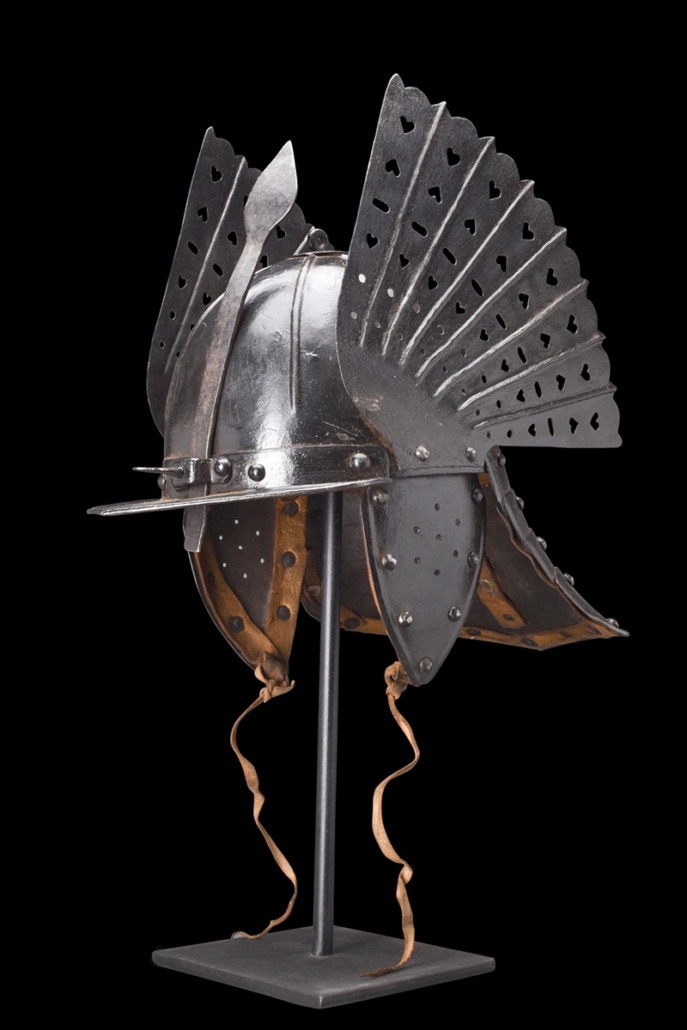
Polish-Lithuanian Commonwealth Saxony, lobster-tail hussar’s helmet with wings, circa 17th-18th century AD, reign of August II the Strong. Round skull with six vertical ridges, horizontal visor with attached narrow face guard. Wings adorned with openwork heart shapes. Provenance: Property of European collector; formerly in private German collection. Estimate £4,500-£9,000 ($5,555-$11,110)
LONDON – Apollo Art Auctions, the premier choice for authentic, expertly vetted ancient art and antiquities, takes pleasure in announcing highlights of its June 10-11 gallery auction, with all forms of remote bidding available, including live via the Internet through LiveAuctioneers. In addition to exquisite, professionally vetted cultural art, artifacts and jewelry, the 702-lot auction will broaden the buying horizons for collectors of ancient arms and armor with the introduction of a major selection expressly for selection militaria.
Significantly, event marks first time Apollo has devoted major auction section to ancient arms and armor
“We have always included fine examples of ancient militaria in our auctions. It stands to reason, because history’s turning points are largely associated with wars and conflicts. But over the past year we’ve noted an increased interest in militaria and felt it was time to give it a category of its own in our major events,” said Dr Ivan Bonchev (PhD, University of Oxford).
In launching the new initiative, the June 10 session presents a number of exceptional examples of arms and armaments, perhaps none more distinctive than a Polish-Lithuanian Commonwealth Saxony lobster-tail hussar’s helmet (shown at top of page) with wings. Created around the 17th-18th century AD during the reign of August II the Strong, its design consists of a round skull with six vertical ridges, a horizontal visor with an attached narrow face guard, and the pièce de résistance: a pair of riveted, “fanned” wings adorned with openwork heart shapes. An astonishing survivor, this helmet was held in consecutive European collections and now comes to auction with an estimate of £4,500-£9,000 ($5,555-$11,110).

Rare hand-forged silver Viking stirrups, circa 9th century AD. Front and back of strap loops and stirrups decorated with interlaced band; lower end of each is decorated with animal head in relief; ends having four different, complex animal depictions in Borre style. Total weight: 1.16kg (2lbs 9oz). Provenance: London ancient art gallery; formerly in European collection; ex Southern German private collection. Estimate £6,000-£12,000 ($7,405-$14,810)
The time-tested skill and artistry of Viking metalsmiths can be seen in a pair of rare circa-9th-century AD hand-forged silver stirrups. The front and back sides of the strap loops and stirrups are decorated with an interlaced band, and the lower end of each is decorated with an animal head in relief on a medallion, the ends having four different, complex animal depictions in Borre style. The stirrups were previously the property of a London ancient art gallery and before that, two private European collections. Estimate: £6,000-£12,000 ($7,405-$14,810)
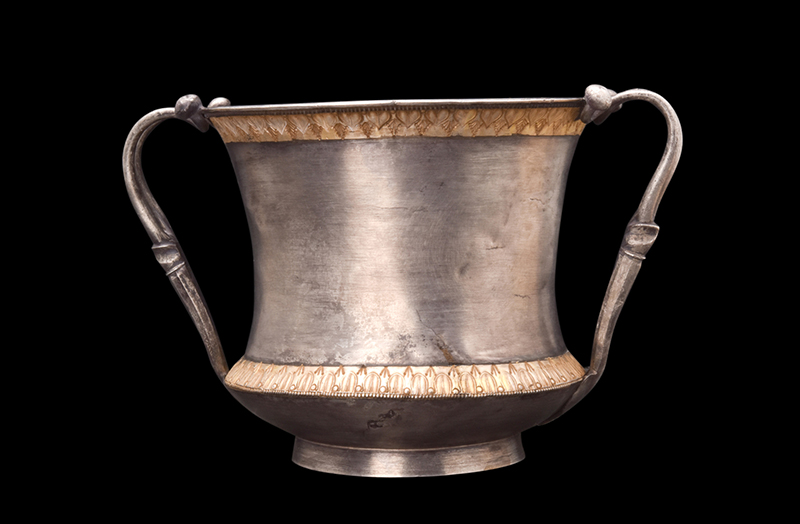
Roman double-handled silver skyphos (used for serving wine at banquets or social gatherings), beautifully balanced and tastefully decorated. Weight: 185g (6.53oz). Provenance: Private London collection, acquired on European art market pre-2000. Estimate £4,800-£9,600 ($5,925-$11,850)
The Ancient Romans were also masters of precious metalwork. A double-handled silver skyphos – a vessel used for serving wine at banquets or social gatherings – exhibits a beautifully balanced design and a motif that would have reflected its owner’s taste for understatement and regal elegance. Its auction estimate is £4,800-£9,600 ($5,925-$11,850). A circa-100 AD Roman gold pyxis – a cylindrical, lidded container for precious essences and ointments – symbolizes patrician refinement and luxury. It is embellished with beading and symbols, including geometric patterns and a repousse swastika (ancient symbol of good fortune), that tell a story of ancient wisdom and mysticism. Sometimes a pyxis would be given as a gift, lavish on its own but twice as opulent with a precious object tucked inside as an extra surprise. The auction example is guided by a £3,000-£6,000 ($3,702-$7,405) estimate.
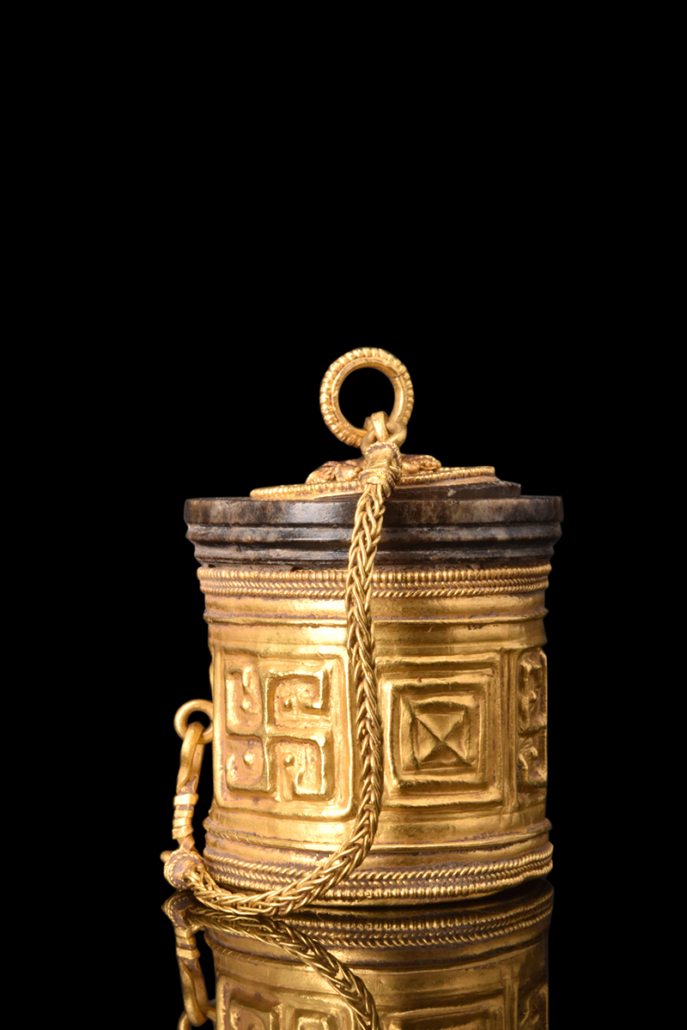
Roman gold pyxis, a container for precious essences and ointments, circa 100 AD. Embellished with repousse swastika (ancient symbol of good fortune) and geometric pattens, bone edge, and beading. Weight: 16g (0.564oz). Provenance: Central London gallery, acquired from old British collection. Estimate £3,000-£6,000 ($3,702-$7,405)
Ancient Roman glass artisans, who laid the foundation for Italy’s modern-day glass tradition, could not be matched in any corner of the Earth. A stunning example from circa 200-300 AD is an iridescent glass amphoriskos (bottle) designed to hold personal perfume or oil for use during rituals. Its neck is adorned with a blue glass ring and a pair of similarly-hued handles. In its day it surely would have been the property of a wealthy individual. In Apollo’s June 11 session, it will be offered with a £2,700-£5,400 ($3,330-$6,665) estimate.
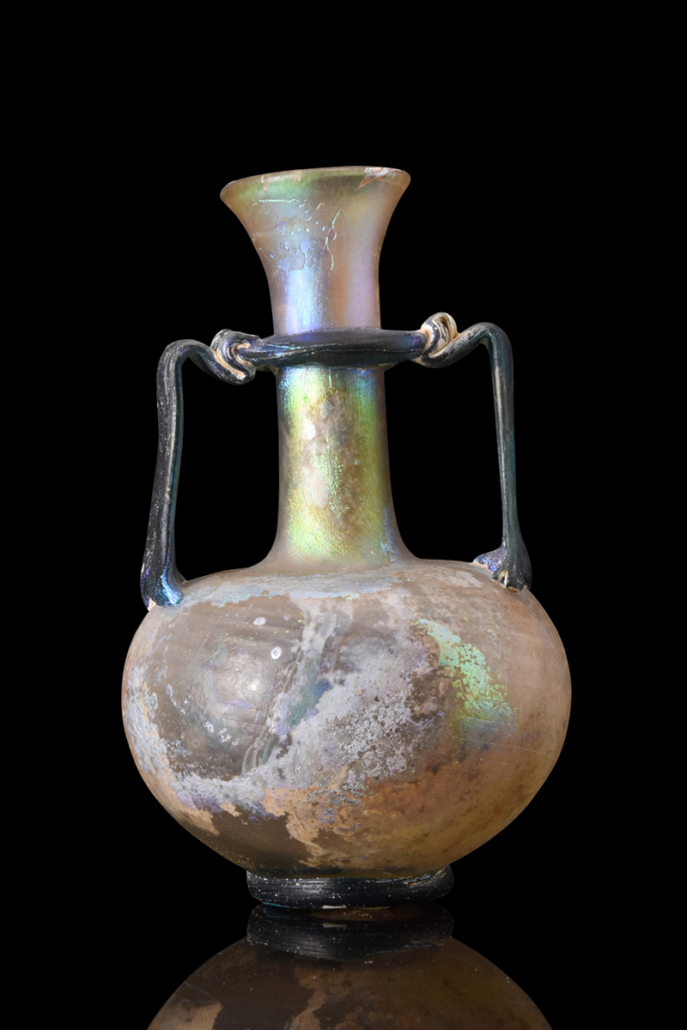
Roman glass amphoriskos, designed as personal perfume (or oil) bottle or for use during rituals, circa 200-300 AD. Stunning blue glass neck ring and handles. Height: 140mm (5.5in). Provenance: Property of North London gentleman; previously acquired on UK/European art market in 1980s. Estimate: £2,700-£5,400 ($3,330-$6,665)
A sumptuous array of ancient jewelry includes many dozens of gorgeous rings, pendants, bracelets, earrings, necklaces, amulets and other adornments. The artistry, originality and integrity of hand-workmanship seen in the pieces to be auctioned equals or surpasses anything created by modern artisans. A top treasure in Apollo Art Auctions’ jewel box is a rare medieval finger ring of rich gold intricately engraved within its rectangular border with a haloed head of Christ (or a saint) holding the Gospels. Dating to circa 1400-1500 AD, this iconographic ring’s distinguished provenance includes the collection of London barrister and lifelong antiquities aficionado Alison Barker (1951-2021). It will convey to its new owner with a detailed report from Striptwist Ltd. Estimate: £6,000-£12,000 ($7,405-$14,810)
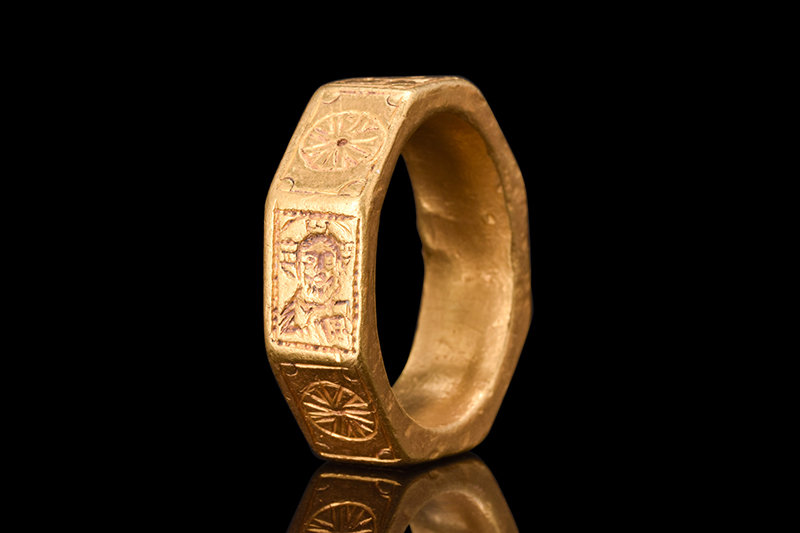
Rare medieval gold iconographic finger ring intricately engraved within rectangular border with haloed head of Christ, or a saint, holding the Gospels. Circa 1400-1500 AD. Weight: 18.89g (0.6663oz). Provenance: London ancient art gallery; formerly in collection of London barrister Alison Barker; acquired between early 1960s-1990s. Accompanied by detailed report from Striptwist Ltd. Estimate: £6,000-£12,000 ($7,405-$14,810)
The wonderful selection of pottery includes an Attic pottery kylix with a decorative black-figure band depicting swans and bovines. Made circa 540-525 BC, it exhibits similarities to an example held in The Metropolitan Museum of Art’s collection. Estimate: £4,500-£9,000 ($5,555-$11,110).
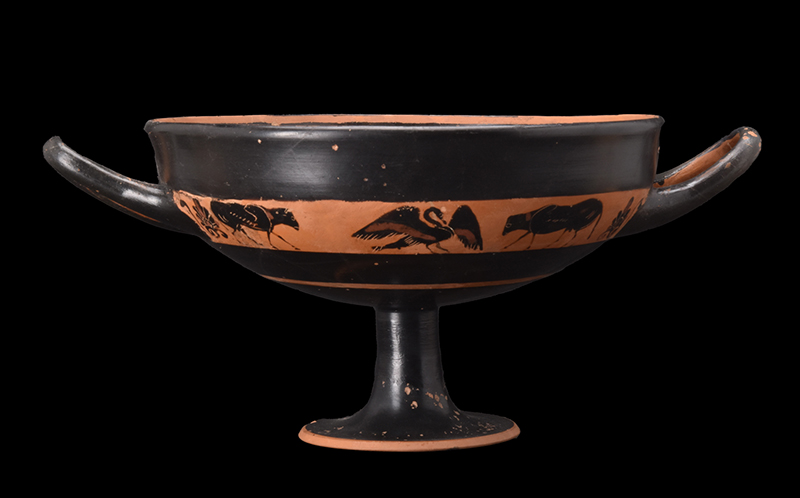
Attic pottery kylix decorated with black-figure band depicting swans and bovines, 125mm x 280mm (4.92in x 11in), circa 540-525 BC. Similarities to example in The Metropolitan Museum of Art. Provenance: English private collection, acquired on art market in 1980s. Estimate: £4,500-£9,000 ($5,555-$11,110)
Another stellar entry is a Timurid (Persianate Turco-Mongol Empire) silver-inlaid bronze plate dating to the early 14th century AD. Its recess (or well) is adorned with the image of a seated figure flanked by birds, and it is encircled by a decorative band depicting various animals in motion. Estimate: £12,000-£24,000 ($14,810-$25,620)

Timurid silver-inlaid bronze plate, circa early 14th century AD, the recess (or well) adorned with the image of a seated figure flanked by birds, and encircled by a decorative band depicting various animals in motion. Size: 220mm x 20mm (8.7in x 0.79in). Weight: 355g (12.52oz). Provenance: Collection of a London gentleman; formerly in the collection of A Kotlar since the 1970s. Estimate: £12,000-£24,000 ($14,810-$25,620)
The Asian selection continues with a Gandharan schist torso of an emaciated Siddhartha Gautama, founder of Buddhism, who endured extreme self-deprivation during his six-year search for enlightenment. This profoundly striking artwork was previously in a private London collection and, sometime between 2000 and 2005, was acquired from an old Japanese collection. Estimate: £3,900-£7,800 ($4,815-$9,630)
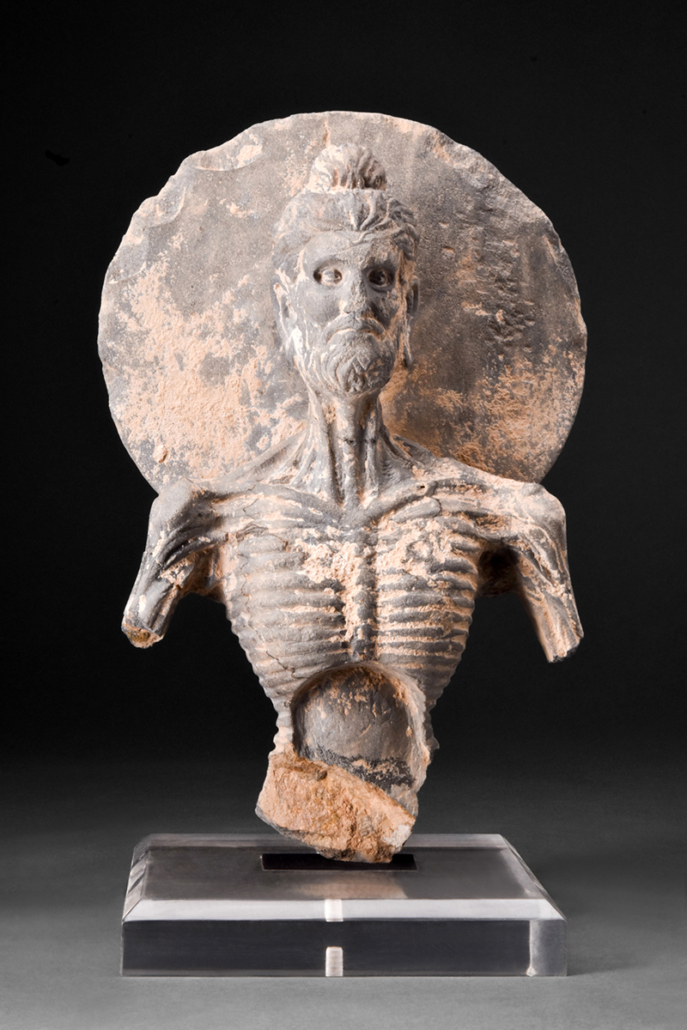
Gandharan schist torso of emaciated Buddha representing a profound period in the life of Siddhartha Gautama, founder of Buddhism, who embarked on a six-year ascetic journey, enduring extreme deprivations in search for enlightenment. Cf. Christie’s, March 21, 2008 sale. Size 250mm x 165mm (9.8in x 6.5in). Weight: 3.13kg (6lbs 14oz). Provenance: Private London collection; acquired in Japan between 2000-2005; formerly in old Japanese collection. Estimate: £3,900-£7,800 ($4,815-$9,630)
Certainly worthy of note, a curious circa 18th- to 19th-century AD Indian brass astrolabe is both a complex and fascinating tool. It is comprised of a circular frame with a flaring finial and seven discs that, together, would have aided astronomers in calculating the positions and altitudes of celestial bodies while also having the capability to determine latitude on land or calm seas. Its auction estimate is £6,000-£12,000 ($7,405-$14,810).
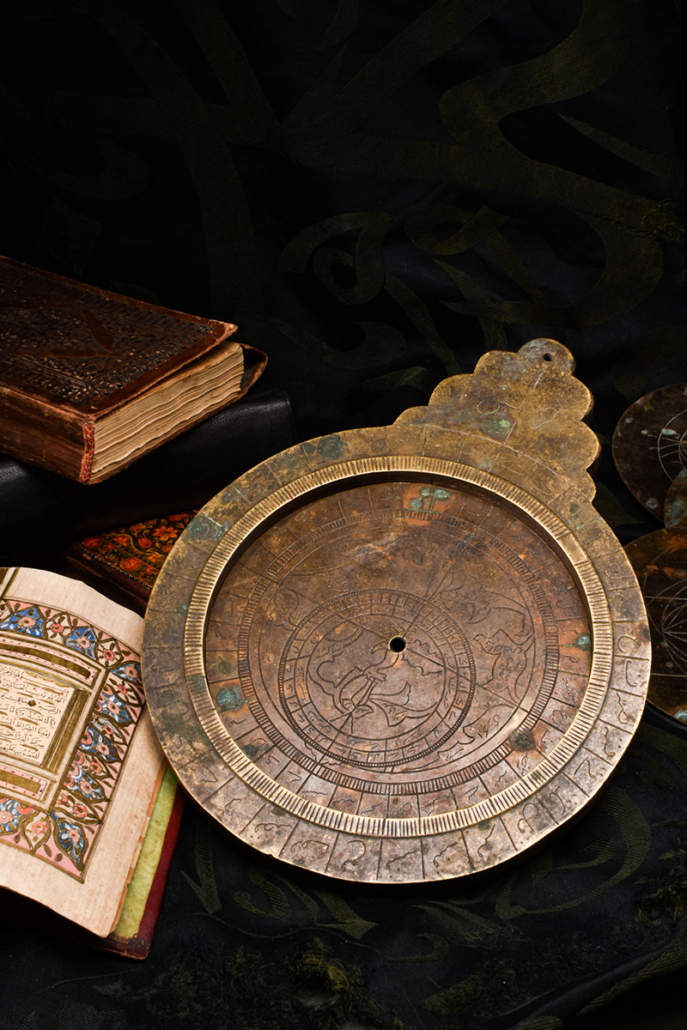
Indian brass astrolabe, circa 18th-19th century AD, comprised of a circular frame and flaring finial with seven discs with, together, form a complex and fascinating tool. Size: 290mm x 220mm (11.4in x 8.7in). Weight: 5.23kg (11lbs 8oz). Provenance: Collection of a London gentleman; formerly in the collection of A Kotlar since the 1970s. Estimate: £6,000-£12,000 ($7,405-$14,810)
Apollo Art Auctions’ spacious gallery is located at 25 Bury Place in the heart of London’s Bloomsbury district, opposite The British Museum. Both sessions of their June 10-11, 2023 auction will commence at 8 a.m. US Eastern Time/1 p.m. BST. View the fully illustrated auction catalogue and sign up to bid absentee or live online through LiveAuctioneers. Apollo Art Auctions accepts payments in GBP, USD and EUR; and ships worldwide. All packing is handled by white-glove specialists in-house. No import charges apply to most antiquities entering the USA. For questions about any item in the sale or to discuss consigning to a future Apollo auction, please call the London gallery on +44 7424 994167 or email info@apollogalleries.com. Online: www.apolloauctions.com
Today’s approximate rate of exchange: £1 = US$1.23
Click to view top auction results on LiveAuctioneers: https://www.liveauctioneers.com/pages/recent-auction-sales/


